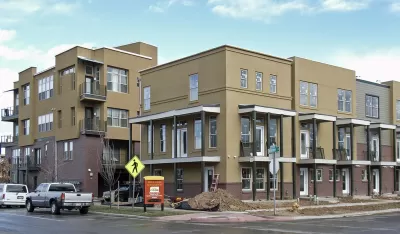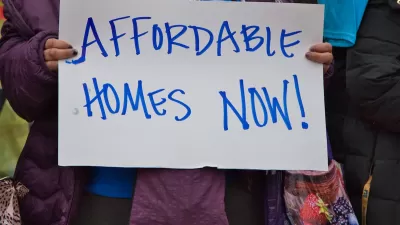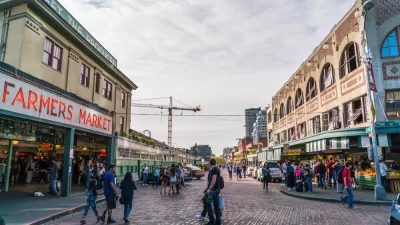New research finds lower displacement rates in neighborhoods with more new housing development. Slowing or stopping new development has the opposite of the desired effect, constricting housing supply, driving up rents, and displacing residents.

An article by Joe Cortright makes that by preventing development, communities concerned about displacement exacerbate the problems they had hoped to avoid. New development, according to Cortright, s necessary to prevent displacement.
"Slowing or stopping new development, particularly new housing development has exactly the opposite of the desired effect. It constricts the housing supply, drives up rents and fuels displacement."
"We’ve seen this time and again. A couple of months back, we profiled two Oakland neighborhoods, Uptown and Fruitvale. Both experienced almost identical increases in rents and home values as the Bay Area city boomed. But Fruitvale, which has built more housing has seen dramatically less demographic change, while Uptown which has built almost no new housing, has seen its population shift."
"The same holds for two neighborhoods in Washington DC’s 20003 zip code, Capitol Hill and the Navy Yard. Historic Capitol Hill has organized to largely block most new development; the Navy Yard area (near the new Washington Nationals ballpark) has seen thousands of new apartments built in the past decade. As Greater Greater Washington describes, the addition of new apartments has helped push down rents in the Navy Yard (the orange line) while rents in Capitol Hill (purple) continue to climb."
"If you don’t build new housing, you intensify the shortage, raise the rents, and amplify the displacement."
FULL STORY: If You Want Less Displacement, Build More Housing

Planetizen Federal Action Tracker
A weekly monitor of how Trump’s orders and actions are impacting planners and planning in America.

San Francisco's School District Spent $105M To Build Affordable Housing for Teachers — And That's Just the Beginning
SFUSD joins a growing list of school districts using their land holdings to address housing affordability challenges faced by their own employees.

The Tiny, Adorable $7,000 Car Turning Japan Onto EVs
The single seat Mibot charges from a regular plug as quickly as an iPad, and is about half the price of an average EV.

Seattle's Plan for Adopting Driverless Cars
Equity, safety, accessibility and affordability are front of mind as the city prepares for robotaxis and other autonomous vehicles.

As Trump Phases Out FEMA, Is It Time to Flee the Floodplains?
With less federal funding available for disaster relief efforts, the need to relocate at-risk communities is more urgent than ever.

With Protected Lanes, 460% More People Commute by Bike
For those needing more ammo, more data proving what we already knew is here.
Urban Design for Planners 1: Software Tools
This six-course series explores essential urban design concepts using open source software and equips planners with the tools they need to participate fully in the urban design process.
Planning for Universal Design
Learn the tools for implementing Universal Design in planning regulations.
Smith Gee Studio
City of Charlotte
City of Camden Redevelopment Agency
City of Astoria
Transportation Research & Education Center (TREC) at Portland State University
US High Speed Rail Association
City of Camden Redevelopment Agency
Municipality of Princeton (NJ)





























